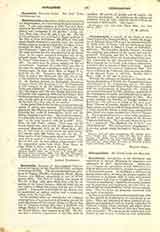

Concelebration is the rite by which several priests say Mass together, all consecrating the same bread and wine. It was once common in both East and West. As late as the ninth century priests stood around their bishop and “consented to his sacrifice” (Corp. Jur. Can., Deer. Grat., Pars III, dist. I, cap. 59). The rite of Concelebration was modified at Rome (perhaps in the time of Pope Zephyrinus, 202-218) so that each priest should consecrate a separate host (the deacons holding these in patens or corporals); but they all consecrated the same chalice (“Ordo Rom. I”, 48; see also Duchesne, “Liber Pont.”, I, 139 and 246). In the sixth century this rite was observed on all station days; by the eighth century it remained only for the greatest feasts, Easter, Christmas, Whitsunday, and St. Peter (“Ordo Rom. I”, 48; Duchesne, “Origines”, 167). On other days the priests assisted but did not concelebrate. Innocent III (1198-1216) says that in his time the cardinals concelebrate with the pope on certain feasts (De Sacr. Altar. Myst. in Migne, P.L., CCXVII, IV, 25). Durandus, who denied the possibility of such a rite (Rationale Div. Off., IV, d. xiii, q. 3) is refuted by Cardinal Bona (Rer. Liturg., I, xviii, 9). St. Thomas defends its theological correctness (Summa Theol., III, Q. lxxxii, a. 2). Concelebration is still common in all the Eastern Churches both Uniat and schismatic. In these, on any greater feast day, the bishop says the holy liturgy surrounded by his priests, who consecrate with him and receive Holy Communion from him, of course under both kinds. So also, at any time, if several priests wish to celebrate on the same day, they may do so together.
In the Latin Church the rite survives only at the ordination of priests and bishops. The newly-ordained priests say the Offertory prayers and the whole Canon, including the words of consecration, aloud with the bishop, kneeling around him. The words of consecration especially must be said “slowly and rather loud” and “at the same moment with the pontiff” (Pont. Rom., de Ord. Presb., rubric). They must say the words significative, that is with the intention of consecrating (Benedict XIV, de SS. Missm Sacr., III, xvi, 6), and must be careful not to say them before, but exactly with, the bishop (op. cit., loc. cit., 7). They receive Holy Communion under one kind. The same rite is used at a bishop’s consecration, except that in this case the new bishop communicates with the consecrator under both kinds (Pont. Rom., de Cons. Electi in Episc., rubric in the text).
ADRIAN FORTESCUE

